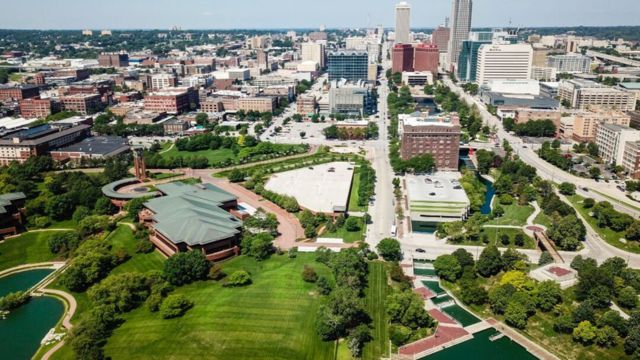
One Nebraska City Declared “Most Unhealthy City” in the Entire State
Nebraska is known for its beautiful scenery, agricultural history, and friendly people, but the health and wealth of its towns are not all the same. 24/7 Wall St. put together a list of cities and found that one in Nebraska is the least healthy place to live.
Grand Island Is A Bad Place to Live
Grand Island is in the middle of Nebraska and has about 51,000 people. It is the county seat of Hall County and the main city of the Grand Island urban area. The Nebraska State Fair and the Stuhr Museum of the Prairie Pioneer are two things that make it famous. Still, Grand Island has a lot of health problems, which is why it is called the unhealthiest place in Nebraska.
According to 24/7 Wall St., Grand Island does badly on a number of health measures, such as the number of potential deaths, the number of people who smoke, and the percentage of people who say their health is fair to poor. Here are some important numbers that show how unhealthy Grand Island is:
- 9,900 lives could be lost for every 100,000 people (the state average is 7,300).
- 18.5% of adults in the state smoke, while 19.8% smoke.
- 34.6% of adults are overweight or obese (the state average is 32.8%).
- 18.0% of adults say their health is fair or bad, compared to 13.4% for the whole state.
- 25.9% of adults are not physically active (the state average is 23.0%).
Based on these health indicators, people who live in Grand Island have a lower quality of life and a higher chance of dying too soon compared to other Nebraskans. Some of the things that make the city’s health problems worse are limited access to health care, high rates of poverty, and exposure to environmental dangers.
The Health Problems: Poverty, Access, and the Environment
Grand Island faces a big problem when it comes to getting medical care. 24/7 Wall St. says that only 72.8% of Grand Island people have health insurance, while 86.3% of Nebraskans do. Also, only 66.9% of people in Grand Island have a primary care doctor, while 76.5% of Nebraskans do.
Based on these numbers, it looks like a big chunk of Grand Island’s people may have trouble paying for or getting to primary and preventive healthcare services, which are necessary to stay healthy and avoid getting chronic diseases.
The high rate of poverty in Grand Island is another big problem the city has to deal with. The U.S. Census Bureau says that 15.9% of people in Grand Island are living in poverty, while only 10.4% of people in Nebraska are living in poverty. It’s also not as good in Grand Island; the typical household income is only $51,440, while Nebraska’s is $63,229.
Poverty is a well-known social determinant of health because it makes it harder for people and families to get healthy food, safe housing, schooling, and other basic needs. Being poor also makes you more likely to experience worry, violence, and discrimination, all of which are bad for your mental and emotional health.
Also, Grand Island has problems with the environment. According to the U.S. Environmental Protection Agency, the amount of ozone in the air is below national limits. Ozone is a dangerous gas that can make breathing problems like asthma, coughing, and emphysema worse.
The city is also close to a number of Superfund sites, which are polluted places that are harmful to both people and the environment. Toxins like arsenic, lead, mercury, and polychlorinated biphenyls (PCBs) can be found at these places. These can cause cancer, damage to the nervous system, and problems with reproduction.
The End: Improving the Health of Grand Island
According to 24/7 Wall St.’s ranking, Grand Island is Nebraska’s least healthy city. It has high numbers of smoking, obesity, and poor health. At the same time, the city has to deal with less access to health care, more poverty, and pollution in the environment, all of which hurt the health of its people.
That being said, Grand Island does not have to be unhealthy all the time. The city can improve its health outcomes in many ways, such as by making healthcare services easier to get and more affordable, reducing the barriers and discrimination that affect low-income and minority groups, encouraging healthy behaviors and lifestyles, and protecting and improving its natural environment.
Grand Island can become a healthier and more lively place to live by encouraging leaders from the city, healthcare experts, community groups, and residents to work together.


